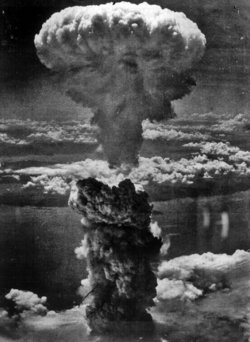Wednesday, May 09, 2007
Eff Bush and His Commnaders! Get OUT, Now!
Commanders in Iraq See 'Surge' Into '08
Pentagon to Deploy 35,000 Replacement Troops
By Ann Scott TysonWashington Post Staff Writer
Wednesday, May 9, 2007; A01
The Pentagon announced yesterday that 35,000 soldiers in 10 Army combat brigades will begin deploying to Iraq in August as replacements, making it possible to sustain the increase of U.S. troops there until at least the end of this year.
U.S. commanders in Iraq are increasingly convinced that heightened troop levels, announced by President Bush in January, will need to last into the spring of 2008. The military has said it would assess in September how well its counterinsurgency strategy, intended to pacify Baghdad and other parts of Iraq, is working.
"The surge needs to go through the beginning of next year for sure," said Lt. Gen. Raymond T. Odierno, the day-to-day commander for U.S. military operations in Iraq. The new requirement of up to 15-month tours for active-duty soldiers will allow the troop increase to last until spring, said Odierno, who favors keeping experienced forces in place for now.
"What I am trying to do is to get until April so we can decide whether to keep it going or not," he said in an interview in Baghdad last week. "Are we making progress? If we're not making any progress, we need to change our strategy. If we're making progress, then we need to make a decision on whether we continue to surge."
Pentagon spokesman Bryan Whitman said yesterday's announcement of the upcoming deployments "is not a reflection on any decision with respect to the duration of the surge."
As the initial U.S. troop buildup in Baghdad nears its June completion, Odierno and other commanders offered details of how they will execute the military's new Iraq strategy, how they expect insurgents and militias to react, and political factors that will bear upon their success.
Commanders said that even with the ongoing increase in Iraq of tens of thousands of American troops, violence could increase in coming months, and some indicators in Baghdad suggest that is already happening.
Partial data on attacks gathered from five U.S. brigades operating in Baghdad showed that total attacks since the new strategy began in February were either steady or increasing. In some cases, certain kinds of attacks dipped as the U.S. troop increase began, only to begin rising again in recent weeks. Overall, "the number of attacks has stayed relatively constant" in Baghdad, said one U.S. officer, who spoke on condition of anonymity because he was not authorized to be quoted by name.
The U.S. military commands that oversee Baghdad and Iraq as a whole have so far failed to meet requests to release current statistics on attack trends, with some U.S. officers voicing concern that the information would be skewed by critics to argue that the strategy is not working.
Although the military can help curtail violence, U.S. commanders say, Iraqi leaders must ultimately forge political compromises in order to create an enduring peace. "They have to pass a certain amount of key legislation for all of this to move forward. If they don't, we could secure all we want but it's not going to be successful," Odierno said, adding that "the jury's still out" on whether Iraq's leaders will act in the national interest.
The main thrust of the military effort in the near term, Odierno said, is to position a critical mass of U.S. and Iraqi troops inside Baghdad to quell the violence that was spiraling out of control late last year. As currently planned, Baghdad will have 25 battalions of U.S. troops and 38 battalions of Iraqi soldiers and police when the increase is complete, he said.
The push to expand the U.S. and Iraqi presence in Baghdad's neighborhoods reflects what U.S. commanders now acknowledge was a mistaken drawdown in 2005 and 2006 of American troops in the capital, leaving Iraqi forces in their place.
"What we had been doing for 3 1/2 years didn't keep up with the sectarian violence spreading so swiftly," said Maj. Gen. Joseph F. Fil Jr., the senior U.S. commander for Baghdad. The new approach "will take every bit of the five brigades" of combat troops now flowing in as reinforcements in the city of 6 million people, he said.
"It's fairly obvious that we transferred out too soon," said Col. Bryan Roberts, who commands a U.S. cavalry brigade in central Baghdad.
The limited U.S. troop presence was one reason that sectarian killings soared out of control in Baghdad after the February 2006 bombing of an important Shiite mosque in Samarra. That spurred what U.S. officers now call the sectarian cleansing of most of eastern Baghdad and large swaths of the west -- as Shiites forced Sunnis out of all but a few enclaves -- a movement that was arrested only with the troop increase this February.
"The sectarian cleansing is pretty much done on the east side" of Baghdad, said a U.S. military official. But since the influx of U.S. and Iraqi forces began, he said, "for the most part the Shia expansion is frozen where it is."
Another vital aspect of the strategy to secure Baghdad, commanders said, is to array more forces on the periphery of the capital to block Sunni insurgents and Shiite militiamen from using the outskirts for staging attacks.
"The Baghdad belts or support zones" have "always been the generator of violence in Baghdad," Odierno said. As a result, he plans to allocate about half of the final two incoming brigades in outlying areas.
Because Iraqi forces are concentrated inside the city, fewer are available to go to the outskirts to partner with U.S. troops, who must cover large areas, he said. In western Baghdad's Mansour district, for example, about 3,000 U.S. and Iraqi troops are covering an area with 300,000 people. "That's huge," said Lt. Col. Dale Kuehl, the U.S. commander for the area.
Still, the decision to place U.S. troops in both Baghdad and the outskirts has led to concern among some officers that their forces will be spread too thin. "If we lose Baghdad, it's game over," said one officer. "We need to concentrate forces in Baghdad and be really ruthless in accepting risk elsewhere," he said.
U.S. commanders said they expected Sunni and Shiite fighters to try to counter the Baghdad strategy in part by staging attacks in other regions.
"They will try to do whatever they can in other cities to draw us out of Baghdad" using vehicle bomb attacks, Odierno said. The Sunni extremist group al-Qaeda in Iraq, for example, might try to establish a base where there are fewer U.S. troops, such as the northern city of Mosul, he said. "We are watching that very closely."
Al-Qaeda in Iraq fighters have recently staged attacks in the predominantly Shiite southern cities of Karbala and Najaf, prompting U.S. and Iraqi officials to launch an assessment of whether the Iraqi police and army have the capability they need to protect the Shiite shrines there, as well as in Samarra and Baghdad, Odierno said.
Diyala province, a demographically mixed area between Baghdad and Iran, has already experienced an upsurge in violence following what Odierno said was in influx in recent months of Shiite militiamen from Baghdad and al-Qaeda in Iraq fighters from Anbar province, a Sunni stronghold in the west of the country. The U.S. military had to dispatch an additional battalion to Diyala, and Odierno said he is considering sending another.
In Anbar, meanwhile, violence has dropped dramatically in recent months because of the cooperation of local tribes -- a trend that could allow for a smaller U.S. presence there in the future, Odierno said. "We have less attacks in Anbar than in any other region," he said.
In Baghdad, sectarian killings have fallen dramatically since January, while suicide bombings using vehicles have increased. Overall, attack patterns varied in different parts of Baghdad. For example, in Mansour to the west, extrajudicial killings fell in February only to increase again by April, while other attacks remained on average the same. In the Rasafa district of central Baghdad, weekly attacks went from 88 in January to 25 in February but are now at about 60.
In the relatively safe Haifa Street area of Baghdad, monthly attacks fell by about 50 percent from January to February but since then have increased slightly, including a significant increase in suicide car bomb attacks. In Sadr City, a large Shiite slum, attack levels have remained fairly constant since January.
In Iraq on Tuesday, violence continued against civilians, U.S. troops and members of the Iraqi security forces. A car bombing at a market in the southern city of Kufa killed at least 16 people and wounded more than 70, according to Najaf provincial police and health officials. The midmorning blast occurred near a Shiite mosque and a popular restaurant, leaving shattered glass and pools of blood on the streets.
Two U.S. soldiers were killed and one was wounded in a roadside bombing southeast of Baghdad, the military said in a statement.
In Diyala province, northeast of Baghdad, a suicide bomber wearing a police uniform detonated an explosives belt at a police station northeast of the provincial capital of Baqubah, killing five officers and wounding 15, said Lt. Mohammed Hekman of the Diyala police.
Staff writer Karin Brulliard in Baghdad contributed to this report.
(In accordance with Title 17 U.S.C. Section 107, this material is distributed without profit to those who have expressed a prior interest in receiving the included information for research and educational purposes. The Lantern has no affiliation whatsoever with the originator of this article nor is The Lantern endorsed or sponsored by the originator.)
....And The Truth Shall Set Us Free
Subscribe to:
Post Comments (Atom)







No comments:
Post a Comment